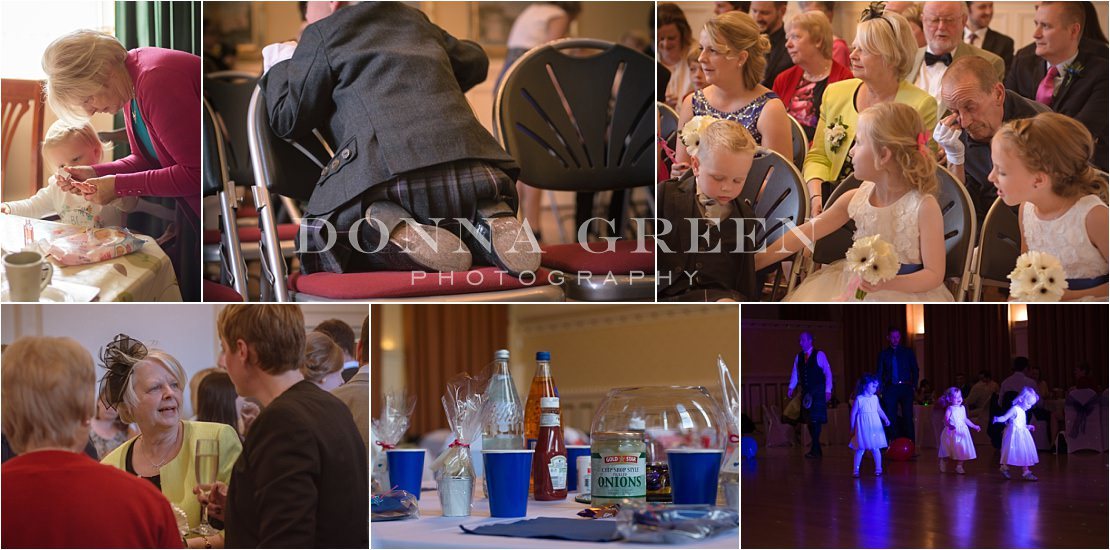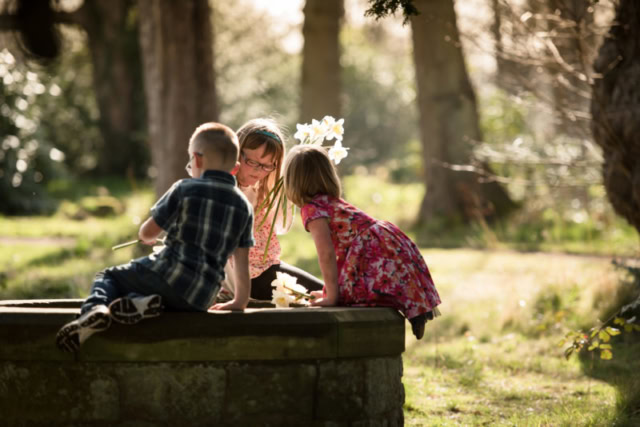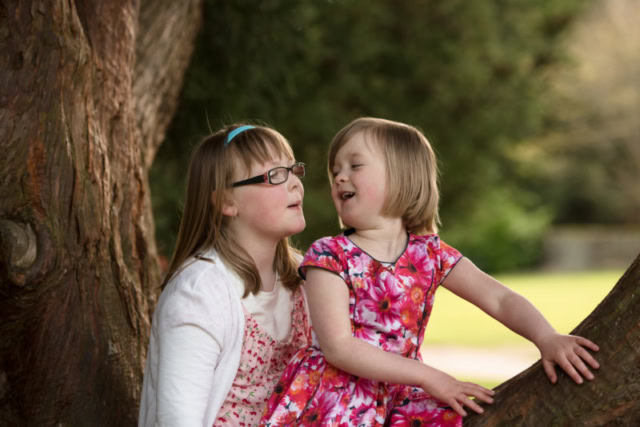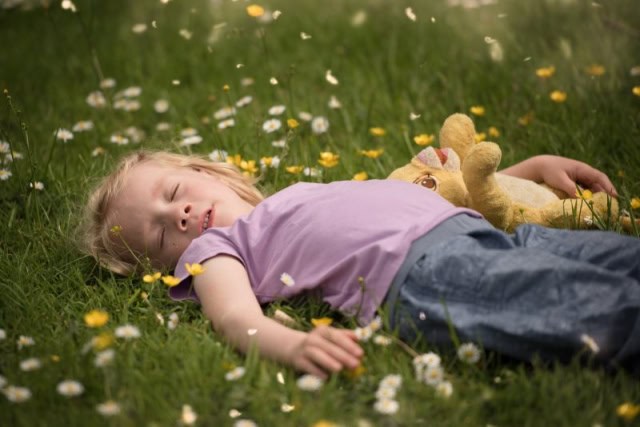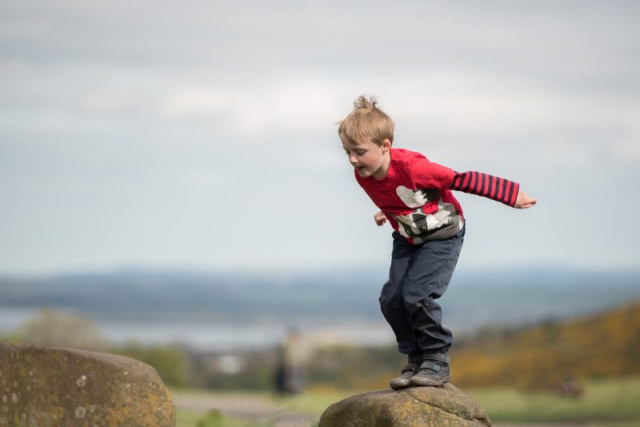How to enjoy the moment and photograph it - is it ever possible?
Have you ever wondered how to enjoy the moment and photograph it?
How do you decide between walking around with your phone photographing folks enjoying themselves, photographing the pile of presents on the table, capturing Grandpa throwing the bairn up in the air – and actually taking the moment in with all five senses?
Following on from my previous post about "How to photograph events yet still be present" ...
It doesn't have to be one thing or the other - you can do both
“Maaaahmeeeee! Put down your phone!” my daughter beseeched me. “Come and look at me play pass the parcel!”
“Aye, aye, of course, hold on a wee minute …”
No, I wasn’t using my phone as a phone. I wasn’t texting. I wasn’t Facebooking. Or emailing. I wasn’t using my phone as a phone, I was using it as a camera. First of all I felt justified doing this; after all, wasn’t it her 5th birthday party? Didn’t I need to take photos at it? Because, well, that’s what you do at these things?
Then I thought NO, not only do I need to be SEEN to be fully paying attention, I actually do really need to genuinely pay it, for her sake and mine. Because there won’t be another 5th birthday for her, will there?

The drawbacks of constantly photographing everything you see
There’s a whole heap of stuff on the internet about how you can miss out on so much if you spend a lot of time taking photographs rather than just being fully present and enjoying what you're involved in, everything from missing the small details to not feeling the feelz because you’re preoccupied with doing something else. So I won’t go into that.
But it’s not all bad …
And interestingly, the flip side of all this is that studies have also proven that people often ENJOY events more when they photograph them, even though they may not absorb as many details.
So should you still take photos at events and parties?
Hell, yes.
I have photographed every single birthday my son had up to the age of 14: some birthday albums where I was clearly busy with the camera are massive, and some hold only a handful of pictures. But I do have them all, and both he and I love looking back over them.

So not for one moment would I suggest that we refrain completely from taking photos at family events. No way.
How to enjoy the moment and photograph it
What I’ll do instead is show you how to navigate the line between being the Party Pest because your phone’s constantly in front of your face, and documenting it just enough so you can look back later and value the memories you’ve caught. And yes, share them on Facebook! (But later. Don’t “post and party”! See below.)
Before the event
What? Did you think you could just turn up and wing it? No. Nooooo. You need to plan this. Just like wedding photographers have a schedule of the day so they know when key events will take place, you need to figure out what’ll be happening when at your event.
1) Ask yourself what you want the photographs for
Confession: I have 14,169 photos spanning over almost two decades in my Flickr account. So many of them are images from parties I’ve been to, nights out, gigs, other random things happening, shots of people who were at best acquaintances, and whose names now I don’t even always recall. Close-up arty-farty shots of details like table decorations, when now a whole room shot would be much more interesting.
If I’d asked myself WHY I wanted all these pictures, I might have thought ah well, I like the way this room is decorated and want to take ideas from it, or, you never know, these people might become very good friends, then 3 or 4 photos tops would have done. Instead of the 47 or so I took which are now deeply boring to scroll through. And the thing is, I’ll never even delete them … Would YOU have the inclination to sort through 12,000+ photos? It would break me, for sure!
There’s nothing wrong with taking photos because it’s fun, it scratches our artistic itch, or we want to have them ‘just in case.’ But if we want to enjoy being present at the event in question, this means we have to cut back on distraction.

So how do we distinguish between taking photos as a distraction and a capturing a meaningful photographic record of the event in question?
To start with, ask yourself:
- What’s the expected longevity of these pictures? Will they be a fleeting presence in a Facebook feed, or will you love looking back over them in the future?
- Have you ever gone to your computer a year later to look for images from an event like this?
- If so, which images really matter to you now?
- Is something quite unique taking place, such as a get-together of people who rarely see each other?
- Is this your only chance to photograph certain people together?
- Is this is a truly special, one-off event?
- Will people close to you who can’t be there will really value seeing the photos you take?
- Do you just like having nice photos on your phone to idly scroll through when you're in the queue in Sainsburys?
Okay, so now you’ve established how important your photos from this event will be, you can decide how much time and effort you should put into photographing it.
Once you’ve done this, decide what you DO need to capture.
2) Identify the visual highlights
You’ll probably want to catch the visual highlights on camera won’t you? Depending on the occasion, these could include:
- Cake cutting
- Blowing out candles
- Handshake
- Speeches
- Present opening
- Presentation of something
3) Timings
If you can figure out in advance roughly what time these things will be happening, that will free you up to just get on with socialising rather than photographing.
4) Know in advance what else you’ll want to capture
As well as deciding on the pivotal moments which will definitely be taking place, think about who will be involved, and what sort of time they’ll be happening. And be ready for it.
- People:
Concentrate on showing relationships between people rather than mere “things”, as these are the moments which you will still find meaningful in years to come. A good way to assess/predict this is to have a quick glance through your old photos of a few years ago. What’s worthless to you now, and what’s valuable? - Details and scene-setting:
Photograph the “establishing shots” in advance. If it’s your party, take a few minutes for wide shots of the whole before everyone gets there, plus the details, and you can do the same at someone else’s party.
During the event
5) Evaluate on the spot whether a moment is worth photographing
When the event is underway, here’s how to evaluate on the spot whether a moment is worth photographing:
Think back to your 12,000+ plus collection of photos. Which images are you glad you took, and which now mean absolutely nothing to you? This is REALLY going to inform how you proceed.
Is this a ‘nice’ image, ie just pretty fluff, or does it add to the story of the evening? Sparkly lights shining off a beautifully wrapped present may look lovely, but is it really worth preserving?
In a year’s time when you see the picture in your collection, will it mean anything to you?
If your eye is captured instead by the light shining off your niece’s hair, will you be glad you took the picture of her and her dad deep in conversation? (Hint: probably.) Does what you see through the camera on your phone screen ad to the who, what, when, where, or why of the event? If not, just enjoy being in that moment without giving in to a compulsion to document it.
Can you actually make a decent quick shot here? Or is it going to be all dark and blurry? If you don’t think your phone camera’s going to cut it, that’s definitely a good reason not to bother, and to just be in the moment instead of trying to photograph it.
Get others to help you. If you’re busy serving up dinner, hand your phone to someone else to get a few shots, preferably with you in them. After all, you’re part of the story too, aren’t you? Don’t leave yourself out.
6) Put a limit on the number of shots you’ll take
If you’re photographing just for your own sake, just for fun, resolve to take a max of X number of shots and then put camera/phone away.
7) Designate a time window up front
Decide what time frame you’ll photograph in. Then put the phone/camera away. If you go to a new place with your family, how about you tell them you’re going to take 15 minutes (or however long) to yourself where you’ll get the phone out and start capturing shots, then you’ll put it away and fully present with them? Or if you’re at a party, why not tell your companion(s) you’ll be going walkabout to take some pictures for 5 minutes (or however long) once everyone’s arrived? (Remember – you probably only REALLY need 4 or 5 shots to capture the essence of the event anyway.)
Don’t post and party
Just don’t.
If it’s reaction you’re after, your photo will be just as popular if it’s posted the morning after the event as when you’re actually there at it.
And if you leave posting till later, you won’t feel any compulsion to see how people are reacting when you should really be nowhere near the internet.
Also, tagging people who are with you is a really bad idea as before you know it, others will be checking THEIR phones and reacting, commenting, etc etc. Don’t be that person!
Looks like I'm going to need a different excuse to get out of "pass the parcel", amn't I?

